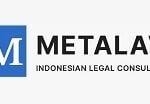-
How often is tax law amended and what is the process?
Congress passes bills amending the Code on a regular (almost annual) basis. Although major amendments to the Code are relatively rare, three significant changes have occurred since 2017. First, the Tax Cuts and Jobs Act of 2017 (“TCJA”), signed into law on December 22, 2017, is considered the biggest amendment to the Code since the Tax Reform Act of 1986; in order to align with certain legislative procedural requirements, many of the taxpayer-favorable changes in the TCJA were schedule to expire in the years following its enactment. Second, Congress passed the Inflation Reduction Act of 2022 (the “IRA”), signed into law on August 16, 2022. The IRA is primarily focused on climate change-related matters, but contains important tax changes, including an alternative minimum tax on multinational corporations and their subsidiaries based on financial statement income, an excise tax on redemptions by public corporations, and changes to tax credit provisions in line with the IRA’s broader environmental purposes. Finally, the One Big Beautiful Bill Act (“OBBBA”) was enacted in to law on July 4, 2025. The OBBBA’s main tax-related changes were to make permanent many the expiring provisions of the TCJA, and to scale back on the availability and scope of the climate-related tax credits introduced or amended by the IRA.
The process of enacting tax legislation originates, as required under the U.S. Constitution, with a tax bill in the House of Representatives (the “House”). The House’s Ways and Means Committee conducts hearings so different constituencies can provide testimony on the proposals in the bill. After the hearings, the Ways and Means Committee revises the bill and sends it to the House as a whole for voting. If the House approves the bill, the bill is sent to the Senate Finance Committee for review and comment. The Senate Finance Committee may conduct its own hearings and make any amendments to the House bill. Once the Senate Finance Committee approves the bill, it is presented to the Senate for a vote. If the Senate passes the House version of the bill without any amendments, the bill is sent to the President, who may sign it into law. Alternatively, if the Senate version of the bill includes amendments, it is returned to the House, revised by the Conference Committee, sent to the House and Senate for approval. If approved by both chambers of Congress, the bill is sent to the President, who may sign it into law.
-
What are the principal administrative obligations of a taxpayer, i.e. regarding the filing of tax returns and the maintenance of records?
The principal procedural obligation of a taxpayer in the U.S. is to file a tax return. Generally, taxpayers, including corporate taxpayers, are required to file an annual tax return by the fifteenth day of the fourth month following the end of the taxable year (e.g., April 15 for calendar year taxpayers). Taxpayers may generally file for an automatic six-month extension to file their federal income tax returns. Corporate taxpayers would file IRS Form 7004 to obtain that automatic six-month filing extension. Individual taxpayers would file IRS Form 4868 to request that automatic six-month filing extension.
Section 6001 requires taxpayers to keep records for as long as the information in such records may be material to substantiating the taxpayer’s federal income tax return position. Subject to certain exceptions, taxpayers should generally maintain tax returns at least through the statute of limitations period with respect to their return. The general statute of limitations period is three years from the date a tax return is filed. However, the three-year period may be extended by agreement of the taxpayer or if the filed return has certain significant defects. A taxpayer’s record keeping and reporting obligations are encouraged through a variety of penalties that range from small monetary penalties to criminal penalties.
An employer is required to file payroll tax returns on a quarterly basis for both the federal income tax and the FICA tax (social security and Medicare tax) withheld from its employees, but is only required to file federal unemployment contribution tax returns on an annual basis. A taxpayer must retain federal payroll tax records for at least four years after the due date of the return or the date the taxes were paid, whichever is later. Additionally, sales, use, and other indirect taxes are levied at the state and local levels and may require monthly, quarterly, or annual filings, depending on the jurisdiction.
-
Who are the key tax authorities? How do they engage with taxpayers and how are tax issues resolved?
The U.S. Internal Revenue Service (the “IRS”) is the agency responsible for the administration of U.S. federal tax law, the collection of revenue, and the auditing of federal tax returns. The IRS is a part of the U.S. Department of Treasury (“Treasury”). State and local revenue agencies are responsible for the administration and collection of state and local taxes.
Treasury and the IRS engage in administrative rulemaking and are the agencies charged with publishing proposed, temporary, and final regulations interpreting the statutes in the Code. The IRS is also responsible for issuing administrative guidance on federal tax matters, such as revenue rulings, revenue procedures, IRS notices (“Notices”), and private letter rulings.
The difficulty of dealing with the IRS in resolving standard issues depends, as would be expected, on the issue itself and the type of taxpayer. Generally, as discussed below, a taxpayer may agree with the proposed assessment, enter into one of several administrative mediation and appeal processes, or file a suit requesting a redetermination with the Tax Court or with a Federal District Court. Large corporate taxpayers, however, are often under continuous audit by the IRS and, in some cases, form part of the Compliance Assurance Program (“CAP”). Taxpayers under CAP have certain disclosure obligations with the IRS, allowing them to solve any potential audit issues prior to filing the return. CAP is widely regarded as a successful program by both taxpayers and the U.S. government. Finally, the IRS’s Large Business and International division identifies certain issues in its national “campaigns.” Issues and transactions included in these campaigns attract additional scrutiny from the IRS and are thought to heighten a taxpayer’s risk of audit.
-
Are tax disputes heard by a court, tribunal or body independent of the tax authority? How long do such proceedings generally take?
Tax disputes are generally capable of adjudication by a court, tribunal or body independent from the tax authority. The timing of the proceeding will vary depending on nature of the dispute and the taxpayer’s choice of forum.
Taxpayers have three judicial forums through which they may litigate the IRS’s proposed assessment: the Tax Court, the Federal District Court for the taxpayer’s district of residence, and the Court of Federal Claims. The Tax Court is a court of national jurisdiction that specializes in tax disputes. The Court of Federal Claims is also a court of national jurisdiction and hears disputes in specialized cases, but its jurisdiction is not solely limited to tax matters. Federal District Courts are courts of general jurisdiction. Appeals from a judgment by any of these courts are heard by the Circuit Courts of Appeals for the jurisdiction of residence of the taxpayer, with the Court of Appeals for the Federal Circuit hearing appeals from decisions by the Court of Federal Claims. Only the Tax Court allows the taxpayer to petition for relief without prepaying the IRS’s proposed assessment. To file suit in a Federal District Court or the Court of Federal Claims, a taxpayer must first pay the IRS’s proposed assessment and then file a claim for refund.
In lieu of adjudicating a dispute in court, a taxpayer may file an appeal with the IRS Independent Office of Appeals (“IRS Appeals”). IRS Appeals is a division of the IRS that is separate from the IRS Examination and Collection functions that make tax assessments and initiate collection actions against taxpayers. IRS Appeals provides an alternative dispute resolution method between taxpayers and the IRS that is less formal and expensive than litigation, and is not subject to the complex federal rules of evidence or civil procedure. Importantly, taxpayers do not give up their right to go to court by going to IRS Appeals.
-
What are the typical deadlines for the payment of taxes? Do special rules apply to disputed amounts of tax?
Taxpayers (individuals and corporations) are required to pay estimated taxes as income is earned or received. Generally, an individual satisfies this requirement by having their employer withhold income tax from the individual’s wages. Taxpayers (individuals and corporations) may also pay their estimated taxes in quarterly payments, due on the fifteenth day of the fourth, sixth, ninth and twelfth month of the relevant tax year, and would submit any additional amount of taxes showing as due on their tax return when the return is filed. The payment for taxes shown as due on a tax return is due with the return.
A taxpayer that fails to timely pay its taxes may face interest and penalties on the underpayment. Amounts in dispute may continue to accrue interest, but taxpayers may avoid this by paying the amount in dispute. On the other hand, if the taxpayer overpaid its taxes for the year, the overpayment amount will accrue interest on the overpayment, and the taxpayer can file for a refund with the IRS.
-
Are tax authorities subject to a duty of confidentiality in respect of taxpayer data?
In general, Section 6103 (which provides for criminal penalties) prevents the IRS and its employees from disclosing a taxpayer’s tax information to third parties, including other government agencies, unless the taxpayer consents to such disclosure. There are limited exceptions to this rule, including allowing state tax agencies to review certain tax information to the extent necessary for the state to administer its tax laws.
-
Is this jurisdiction a signatory (or does it propose to become a signatory) to the Common Reporting Standard? Does it maintain (or intend to maintain) a public register of beneficial ownership?
The U.S. has not adopted the OECD’s Common Reporting Standard. Rather, the Code has various provisions addressing the collection of information related to beneficial ownership. For example, certain information must be collected and reported to the IRS by financial intermediaries under the Foreign Account Compliance Act, or “FATCA”, and foreign owners of U.S. limited liability companies (“LLCs”) have to report certain transactions involving these LLCs, even if they would not otherwise owe any U.S. tax. The U.S. has also signed various bilateral intergovernmental agreements with other countries providing for the automatic exchange of tax information.
On January 1, 2021, Congress passed the Corporate Transparency Act (the “CTA”), which is generally intended to prevent the illicit flow of funds into the United States by requiring certain companies (“reporting companies”) to file certain information with Treasury’s Financial Crimes Enforcement Network (“FinCEN”) with respect to their business and beneficial owners. Regulations issued in 2022 provided additional guidance with respect to the CTA’s reporting requirements. More specifically, the reporting requirements under the CTA and the 2022 regulations are broad and require the disclosure of natural persons that are, directly or indirectly, beneficial owners of the reporting companies. Generally, subject to certain exceptions, beneficial owners are all persons that directly or indirectly (i) own 25% or more of the reporting company, or (ii) exert substantial control over such company. The regulations also required the disclosure of other persons that assisted such beneficial owners in the formation of the company, specifically, the individual that directly files the formation document and the individual who is primarily responsible for directing and controlling such filing. However, the regulations also exempt from the reporting requirements entities in highly regulated industries (e.g., banks, insurance companies), as well as “large operating companies” (i.e., companies that have a physical office in the United States, reported revenues of more than $5 million a year in their U.S. federal income tax or information return for the prior tax year, and have 20 or more full-time employees. Information collected by FinCEN will be stored in a private database and will not be accessible to the public, but may be shared with law enforcement agencies, including the IRS. Since 2022, however, the CTA has faced delays in its implementation through administrative decisions to delay enforcement and injunctions issued by courts pursuant to law suits challenging the constitutionality of the law. Additionally, on March 2025, the current administration issued an interim final rule exempting U.S. beneficial owners and entities from the rules, such that the CTA currently would only apply to entities formed in a non-U.S. jurisdiction and their non-U.S. beneficial owners, and which are registered to do business in a U.S. state or tribal jurisdiction.
-
What are the tests for determining residence of business entities (including transparent entities)?
For U.S. tax purposes, an entity is generally a resident of the jurisdiction where it is formed or incorporated. A corporation is a “domestic” corporation if it is formed in the U.S. under the law of the U.S., any U.S. state or the District of Columbia. A domestic corporation can be a resident even if it does not own any property in the U.S. or conduct any business in the U.S. Under Section 7874, however, a foreign corporation that acquires the stock, or assets, of a domestic entity in an “inversion” transaction may be treated as a U.S. corporation, if certain requirements are met. If these rules apply, the foreign corporation would generally be expected to be treated as a resident of both the U.S. and a foreign jurisdiction (e.g., its jurisdiction of incorporation or place of management).
Similarly, partnerships and other transparent entities (e.g., an LLC with a single owner) are “domestic” if they are formed or incorporated in the U.S. Partnerships and other transparent entities are generally subject to U.S. tax return filing requirements, even if they are not subject to U.S. tax. An entity is generally “foreign” for U.S. tax purposes if the entity is not “domestic,” subject to the application of Section 7874 (as described above).
-
Do tax authorities in this jurisdiction target cross border transactions within an international group? If so, how?
The IRS certainly focuses on policing cross border transactions. Although changes to the international tax rules introduced by the TCJA are expected to reduce taxpayers’ need for complex repatriation planning, the IRS is expected to continue to expend resources to police cross border transactions. In that regard, the IRA provided more than $76 billion of additional funding for the IRS over the 10-year budget window to expand and improve its enforcement functions, with a focus on large corporations and global high net worth taxpayers. However, such funding has been reduced by post-IRA debt ceiling legislation, although the practical impact of such reduction is unclear, and the agency’s staffing has seen significant reductions under the current administration’s plans for a reduced federal workforce.
One of the primary ways through which Treasury and the IRS have policed and shut down certain transactions is by issuing Notices announcing forthcoming regulations, or simply by issuing new regulations. Perhaps the best example in recent years of such practice is how Treasury and the IRS have addressed inversion transactions. Congress enacted Section 7874 (assessing a corporate-level tax on inversion transactions) in 2004. Treasury and the IRS issued several sets of regulations and Notices addressing specific transactions used by taxpayers either to effectuate an inversion transaction or to reap the benefits of an inversion transaction (e.g., by removing foreign subsidiaries “out-from-under” their U.S. parents). These enforcement actions culminated in 2016, when Treasury and the IRS issued a comprehensive set of proposed regulations aimed at preventing inversion transactions; the regulations were finalized with few changes in 2018. In 2016, on the same day as the proposed inversion regulations, Treasury and the IRS also issued expansive proposed regulations under Section 385, addressing debt-equity classification and “earnings-stripping.” These proposed regulations were significantly curtailed when they were finalized later in 2016, and portions of the regulations have since been withdrawn, due in part to a lessened concern about earnings-stripping following the amendment of Section 163(j) (the thin-capitalization rules) under the TCJA.
The IRS also polices cross border transactions through the court system. In recent years, the IRS has been involved in several transfer pricing cases, primarily focusing on the transfer of intangible assets to foreign affiliates in low- or no-tax jurisdictions. On August 2, 2024, the Tax Court entered a final judgment in favor of the IRS in a transfer pricing case against a U.S. multinational company resulting in a $9 billion increase to the multinational company’s income for the tax years in question; the case is currently under appeal.
As discussed above, the TCJA introduced substantial changes to the U.S. international tax rules under the Code. The combination of the transition tax of Section 965 (the constitutionality of which is currently being litigated in front of the Supreme Court) and the participation exemption for dividends received by a U.S. corporation from certain foreign subsidiaries under Section 245A reduce the need for complicated repatriation planning, an area the IRS had addressed by issuing Notices and through litigation. However, the Base Erosion and Anti-abuse Tax (“BEAT”) under Section 59A and the anti-hybrid provisions of Section 267A have created new fronts for the IRS to challenge taxpayer positions.
-
Is there a controlled foreign corporation (CFC) regime or equivalent?
The U.S. has a long-standing controlled foreign corporation (“CFC”) regime, which is codified under Subpart F of the Code. Under Subpart F of the Code, the U.S. imposes a tax on the direct and indirect “U.S. shareholders” of a CFC based on the type of income earned by the CFC. A U.S. shareholder is a U.S. person that directly, indirectly or constructively owns at least 10% of the vote or value of the corporation. A CFC is a foreign corporation with respect to which U.S. shareholders own more than 50% of the voting power or value the corporation’s stock on any day during the foreign corporation’s taxable year. Historically, the U.S. has taxed U.S. shareholders of a CFC only on the passive income (e.g., dividends, interest, royalties) earned by the CFC, subject to various exceptions. However, under the Global Intangible Low-Taxed Income (“GILTI”) regime introduced by the TCJA, the U.S. taxes U.S. shareholders of a CFC based on the CFC’s active income. Specifically, GILTI imposes a tax on the CFC’s income that exceeds a 10% return on the CFC’s investment (the “deemed return exclusion”), measured by using the corporation’s tax basis, in its tangible assets used in the CFC’s trade or business. S. shareholders subject to GILTI may avail themselves of several exceptions or reductions to the tax. For example, corporate U.S. shareholders of a CFC are allowed a 50% deduction on their share of the CFC’s GILTI income, subjecting them to an effective GILTI rate of tax of 10.5%. The OBBBA renamed the GILTI as “Net CFC Tested Income” (“NCTI”) and introduced several important changes effective for tax years starting after December 31, 2025, including by removing of the deemed return exclusion and reducing the deduction allowable to U.S. shareholders to 40% of the CFC’s NCTI income.
-
Is there a transfer pricing regime? Is there a "thin capitalization" regime? Is there a "safe harbour" or is it possible to obtain an advance pricing agreement?
The U.S. also has a thin-capitalization regime, codified under Section 163(j). Generally, Section 163(j) limits the amount of interest that taxpayers may deduct to 30% of EBITDA. The 30% limitation applies to all of the taxpayer’s interest expense, regardless of whether such interest expense accrues on related or third-party debt. Further, interest expense deductions that are disallowed for any given tax year may be carried forward indefinitely. Special rules apply to interest expense on debt issued by a partnership (for U.S. federal tax purposes), including limitations on how the partners may in future taxable years deduct the partnership’s excess interest expense.
The U.S. also has a robust transfer pricing regime under Section 482 and the regulations promulgated thereunder. With respect to complying with the transfer pricing regime, U.S. taxpayers may seek advance pricing agreements from the IRS. A U.S. taxpayer may also seek bi-lateral or multi-lateral advance pricing agreements with the IRS and the taxing authorities of countries with which the U.S. has a tax treaty in force, to the extent the U.S. taxpayer is engaged in transactions with affiliates resident in those jurisdictions.
-
Is there a general anti-avoidance rule (GAAR) and, if so, how is it enforced by tax authorities (e.g. in negotiations, litigation)?
U.S. federal tax law does not have a GAAR. However, there are various judicial doctrines that, if applicable, will ignore the form of the transaction and determine the tax consequences of the transaction in accordance with its substance. These judicial doctrines generally require that a transaction have a legitimate non-tax business purpose and economic significance beyond the expected tax benefits; a transaction with multiple steps generally must be analyzed as a single integrated transaction, rather than separately analyzed steps. These judicial doctrines are known as the “step-transaction”, “economic substance”, “business purpose” and “sham transaction” doctrines. The economic substance doctrine was codified in Section 7701(o), but the case law remains applicable.
Although U.S. federal tax law does not have a GAAR, it does have numerous specific anti-abuse rules (“SAARs”). Generally, the SAARs apply to a specific Code section (and/or the regulations promulgated thereunder) and often include “principal purpose” language. The Code and regulations contemplate two principal purpose standards applicable to SAARs: “a principal purpose” and “the principal purpose” standard. Several courts have addressed the meaning of the “principal purpose” standards and interpreted the term “the principal purpose” to apply more narrowly than “a principal purpose” on the basis that “a principal purpose” may apply in a single transaction, or in a series of transactions pursuant to a plan, that each have “a principal purpose.” Under “the principal purpose” standard, there can only be one principal purpose of tax avoidance for the transaction or series of transactions. The new provisions enacted under TCJA, to the extent they have SAARs, generally use “a principal purpose” standard.
-
Is there a digital services tax? If so, is there an intention to withdraw or amend it once a multilateral solution is in place?
The U.S. does not impose a federal tax that is specific to digital services; rather, income from digital services are subject to tax under typical U.S. tax principles. The U.S. government has generally viewed the imposition of taxes specifically targeted at digital services by non-U.S. jurisdictions as unfairly targeting U.S. multinationals. Indeed, the U.S. has threatened retaliatory tariffs against certain countries imposed unilateral digital services taxes. Indeed, although not ultimately enacted, the OBBBA’s initially proposed “retaliatory tax” would have included digital services taxes under the definition of “unfair foreign tax,” imposing additional taxes on jurisdictions that impose such taxes.
Several U.S. states and localities, however, impose taxes that are specific to digital services.
-
Have any of the OECD BEPS recommendations, including the BEPS 2.0 two-pillar approach been implemented or are any planned to be implemented?
Yes. In 2016, Treasury and the IRS finalized regulations adopting country-by-country reporting requirements in line with BEPS Action 13. Generally, these regulations apply to multinational enterprises with a U.S. ultimate parent entity and with annual consolidated group revenues equal to or greater than $850 million. The IRS has since entered into competent authority agreements with other jurisdictions to facilitate the automatic exchange of country-by-country reporting between the U.S. and its counterparty.
Additionally, Congress enacted legislation as part of the TCJA that follows some of the OECD BEPs recommendations. Section 267A addresses hybrid mismatches, consistent with BEPS Action 2. Section 267A disallows interest expense and royalty deductions to U.S. taxpayers to the extent the interest expense and royalty deductions are part of a hybrid transaction (e.g., sale-repurchase transactions) or involve hybrid entities, and the amount paid by the U.S. taxpayer is not included in income of the recipient.
The TCJA and the OBBA also modified and supplemented existing U.S. tax rules that are mirrored in the BEPS Actions. Prior to the enactment of the TCJA, Section 163(j) provided a limited “thin capitalization test” generally applicable to debt issued by a U.S. taxpayer to related parties not subject to federal income tax (e.g., a foreign related party) or to unrelated parties where a related party guaranteed the debt. The TCJA the OBBBA amended Section 163(j) to impose general limitations on the deductibility of interest expense to 30% of EBITDA, taking into account all of the taxpayer’s debt (i.e., third-party and related-party debt). The CARES Act increased the limitation to 50% of EBITDA for tax years beginning in 2019 and 2020. As discussed above, the U.S. has had long-standing CFC rules and other anti-deferral provisions, which were modified and expanded under the TCJA and the OBBBA to include the GILTI and NCTI regimes.
Although Treasury released an updated model treaty in 2016 and Congress recently ratified treaties with Chile and Croatia (and terminated its treaty with Hungary), after a long period during which it refused to ratify any treaties as a result of objections certain legislators have against automatic exchanges of information, the U.S. has not adopted the OECD’s multilateral instrument.
As discussed above, the U.S. government has taken a strong position against unilateral digital services taxes imposed by other jurisdictions. Instead, the IRA included a minimum tax on a large corporate taxpayer’s (and its group’s) book income to address issues imposed both by the digitalization and globalization of the economy. Prior to the IRA, the Biden Administration had proposed certain changes to U.S. tax law to conform to the Pillar Two initiative, particularly with respect to the qualification of GILTI under the income inclusion rule or as a CFC tax for Pillar Two purposes, given that GILTI is not calculated on a jurisdiction-by-jurisdiction level. For the same reasons, the IRA’s corporate alternative minimum tax also appears to be inconsistent with the current Pillar Two proposal.
Although the OBBBA retained the IRA’s corporate alternative minimum tax, as discussed above, it also included a “retaliatory tax” aimed at jurisdictions that adopted Pillar 2-type taxes. The retaliatory tax was removed from the OBBBA pursuant to ongoing negotiations with G7 nations to create a “parallel” system where U.S. taxpayers are not subject to Pillar 2-type taxes enacted by other countries, and may well be introduced in future legislation. It is unclear to what extent, if any, the current administration will coordinate with the OECD, or follow OECD recommendations, in its future legislative agenda.
-
How has the OECD BEPS program impacted tax policies?
BEPS certainly has influenced the U.S. government’s tax policy, as reflected in some of the laws and modifications to existing laws under the TCJA and the IRA. For example, the legislative history to Section 267A and the preambles to the regulations issued thereunder note that Section 267A is meant to be consistent with BEPS Action 2 and is intended to address a similar set of problems. Similarly, changes to provisions and enforcement priorities addressing interest expense deductions and transfer pricing following the enactment of the TCJA (including as modified by the OBBBA) and the IRA also align with their respective BEPS Actions.
However, the U.S. government has threated measures against countries adopting OECD Pillar 2 taxes. As discussed above, early versions of the OBBBA included a “retaliatory tax” against countries that enacted Pillar 2 taxes; such provision was removed from the final version of the OBBBA as part of ongoing negotiations between the U.S. government and other G7 countries.
-
Does the tax system broadly follow the OECD Model i.e. does it have taxation of: a) business profits, b) employment income and pensions, c) VAT (or other indirect tax), d) savings income and royalties, e) income from land, f) capital gains, g) stamp and/or capital duties? If so, what are the current rates and how are they applied?
The U.S. taxes its citizens and residents on worldwide income. Corporations are taxed at a flat 21% rate, while individuals are taxed at graduated rates, with the maximum rate being 37%.
(a) Business Profits: U.S. corporations are generally subject to tax at a flat rate of 21% on their worldwide income, including income from foreign branches and certain income from foreign subsidiaries. State and local governments may also levy corporate income taxes on the same (or similar) tax base. Certain income earned from foreign subsidiaries under the GILTI / NCTI or “foreign derived intangible income” (“FDII”) (renamed under the OBBBA as “foreign-derived deduction-eligible income” or “FDDEI”) regimes may be reduced by deductions of 50% and 37.5%, respectively, for tax years beginning before December 31, 2025; for tax years beginning after December 31, 2025, the deductions are reduced to 40% for NCTI and 33.34% for FDDEI. The TCJA also enacted Section 199A, which provides a further reduction of up to 20% of qualified business income for pass-through businesses.
(b) Employment Income and Pensions: Employers and employees are subject to federal payroll taxes from certain compensation paid to employees for services performed in the U.S. In addition, certain states may also impose state level income and unemployment taxes.
- Income Taxes: An individual taxpayer’s income tax base also includes wages, regardless of where or when payments are made, absent an applicable treaty. In 2024, an individual taxpayer in the U.S. may be subject to tax at the following graduated tax rates on their ordinary income, depending on the taxpayer’s applicable tax bracket: 10%, 12%, 22%, 24%, 32%, 35%, or 37%.
- FICA: FICA taxes consist of social security tax and Medicare tax. In 2025, employees and employers are each subject to a social security tax of 6.2% on the first $176,100 of wages paid to an employee and a Medicare tax of 1.45% on the wages paid to an employee. Additionally, the employee must, via withholding by their employer, pay an Additional Medicare tax 0.9% on their wages in excess of $200,000; unlike the social security and general Medicare taxes described above, there is no employer match for this Additional Medicare tax.
- FUTA: Employers are generally subject to federal unemployment tax of 6% on the first $7,000 of wages paid to employees.
(c) VAT (or other indirect tax): The U.S. does not impose a “value added tax” or similar type of sales tax at the federal level. However, most U.S. states and local jurisdictions impose sales and use taxes on the purchase of goods and services; the rates vary by state.
(d) Savings Income and Royalties: Income from savings and royalties are generally included in the determination of taxable income and taxed at a rate of 21% in the case of a corporate taxpayer and at the applicable ordinary income statutory rate with respect to an individual taxpayer. Additionally, interest, annuity and royalty income (among other types of income) earned by individuals with gross income over certain thresholds is subject to the net investment income tax (the “NIIT”) at a rate of 3.8%.
(e) Income from Land: Income from land is generally included in the determination of taxable income and taxed at a rate of 21% in the case of a corporate taxpayer and at the applicable statutory rate with respect to an individual taxpayer. A 15% withholding tax applies to foreign persons that dispose of “United States real property interests” or “USRPI.” Generally, USRPI includes U.S.-situs real property and improvements, or stock in a U.S. corporation if at least 50% of the value such corporation’s assets consist of USRPI.
(f) Capital Gains: In general, capital gains earned by a corporation are taxed at the same 21% rate applicable to the corporation’s other income. However, gain from the sale or disposition of a capital asset is generally subject to special rules. In general, a corporation’s capital losses may only offset capital gains, and not a corporation’s ordinary income. Unlike a corporate taxpayer, an individual taxpayer is generally subject to a lower rate of tax on long-term capital gains (with respect to property held for more than one year) than the rate applicable to an individual’s short-term capital gains or ordinary income. The maximum federal tax rate on “long term capital gains” to an individual taxpayer is 20%. However, in the case of “short term capital gains” an individual taxpayer is taxed at the applicable ordinary income statutory rate. Capital gains earned by qualifying individuals, whether taxed at the 20% or applicable ordinary income statutory rates, are also subject to the 3.8% NIIT.
(g) Stamp and/or Capital Duties: The U.S. does not impose a stamp or capital duties tax at the federal level. However, state and local jurisdictions may impose these and other transfer taxes on the sale of real property or on the transfer of a controlling interest in an entity that owns real property.
-
Is business tax levied on, broadly, the revenue profits of a business computed in accordance with accounting principles?
The Code generally permits taxpayers to select the method of accounting used to calculate their taxable income, provided the chosen method clearly reflects their income and expenses. Permissible methods of accounting include: (1) the cash method, (2) the accrual method, (3) certain methods for special items of income and expenses or (4) a combination of two or more of the preceding methods. Corporate taxpayers generally follow the accrual method of accounting, including the “all events” test; under this method, items of income generally accrue if “all events” that that fix the taxpayer’s right to receive the income have occurred and the taxpayer can determine the amount of income with reasonable accuracy.
-
Are common business vehicles such as companies, partnerships and trusts recognised as taxable entities or are they tax transparent?
Yes. As discussed above, the U.S. generally uses the place of incorporation for determining corporate tax residence. Domestic corporations are always treated as taxable entities for U.S. federal tax purposes. In addition to tax residence, the classification of an entity under the “check-the-box-regulations” must be determined because such classification governs if and how such entity is taxed for U.S. federal income tax purposes. Domestic and foreign business entities generally may be classified as corporations, partnerships or entities disregarded as separate from their owners. A business entity with two or more owners is classified as either a corporation or a partnership, and a business entity with only one owner is either classified as a corporation or is disregarded as an entity separate from its owner.
An entity is classified as a “per se corporation” and automatically classified as a corporation which is ineligible to elect their classification, if it is formed under federal or state corporate statues, or is a type of entity in a form enumerated in Treasury Regulations Section 301.7701-2(b)(8). If an entity does not meet any of these requirements, it is an “eligible entity” that may elect its classification. Default classification rules determine the initial classification, which may be changed by making an election, and if no election is made, a default classification will apply (unless the entity is a “per se” corporation).
The tax treatment of certain entities, like an LLC, may depend on whether it follows the default tax classification (which will depend on the number of owners the entity has) or whether the entity elects its treatment for U.S. federal tax purposes. The default classification for an LLC is as an entity disregarded as separate from its owner if it has one owner and as a partnership if it has two owners. In addition to the default classification, an LLC may also elect to be treated as: (i) an entity disregarded as separate from its owner if it has one owner, (ii) a partnership if it has two or more owners, or (iii) a corporation (regardless of the number of owners). Similarly, limited partnerships, which are treated as flow-through entities, are also eligible to make an election to be treated as a corporation for U.S. federal tax purposes. In addition, certain entities, like a trust, are treated as separate taxable entities, while a domestic corporation that qualifies as “small business corporation” may make an election to be treated as a flow-through entity.
Subject to certain limitations, entities that are transparent for tax purposes may offer certain tax benefits to their owners, such as the absence of an entity-level tax, and thus, may be more “tax efficient” than corporate entities.
-
Is liability to business taxation based on tax residence or registration? If so, what are the tests?
As described above, U.S. citizens and residents are subject to U.S. tax on income earned on a worldwide basis. “U.S. persons” are defined to include all U.S. citizens, residents, and business entities such as corporations, partnerships, certain trusts and estates that are formed or incorporated in the U.S. On the other hand, “foreign persons” are persons other than U.S. persons. Generally, foreign persons with U.S.-source income are taxed (i) via withholding taxes if the U.S.-source income is passive income or (ii) on their net income, under the general rules applicable to U.S. persons, if they are engaged in a trade or business in the U.S.
-
Are there any favourable taxation regimes for particular areas (e.g. enterprise zones) or sectors (e.g. financial services)?
As part of the TCJA, Congress added certain provisions to the Code that provide special benefits for investments in “qualified opportunity zones.” These federal initiatives are intended to encourage private investment in low-income urban and rural communities by deferring, and in some cases excluding, capital gains to the investors in such qualified opportunity zones. The OBBBA modified the qualified opportunity zone provisions to provide additional incentives to investors and developers, including a 30% basis step up in certain rural property, but also narrowed the scope of the provision by, among other things, including stricter requirements in defining whether a community qualifies as “low income.” Additionally, states and localities are also known to provide favorable tax regimes to certain industries or specific taxpayers to incentivize them to move operations (e.g., a car-building plant, a headquarters office) to their respective jurisdictions.
The IRA included many incentives for clean energy investments, generally in the form of tax credits to generate and store renewable power, as well as the production in the U.S. of components for the clean energy industry. These changes were generally applauded by the green technology industry. However, the OBBBA terminated or significantly curtailed many of the IRA’s clean energy incentives.
-
Are there any special tax regimes for intellectual property, such as patent box?
Generally no, but the Code provides tax credits for certain research activities. Additionally, as part of the TCJA and the OBBBA, Congress enacted the FDII and FDDEI provisions, respectively. Under FDII, U.S. corporations may deduct 37.5% of certain income they earn abroad for tax years beginning before December 31, 2025, and, under FDDEI for tax years beginning after December 31, 2025, 33.34% of certain income earned abroad. Although not limited to intellectual property, FDII and FDDEI includes leases and services, royalty and license income received by a U.S. corporation from foreign parties.
-
Is fiscal consolidation permitted? Are groups of companies recognised for tax purposes and, if so, are there any jurisdictional limitations on what can constitute a tax group? Is there a group contribution system or can losses otherwise be relieved across group companies?
Yes. The Code and corresponding regulations, generally permit a group of U.S. corporations that are affiliated through 80% or more ownership (measured by vote and value), to file a consolidated federal income tax return and offset the profits of one group member with losses of another group member. Many states also permit the group of corporations to file a consolidated return for state corporate income tax purposes.
-
Are there any withholding taxes?
Yes. Foreign persons are generally subject to withholding tax at a 30% rate on U.S.-source income that is “fixed or determinable annual or periodic gains, profits and income” (“FDAP”). FDAP includes passive income such as dividends, interest, royalties, and rents. There are certain exceptions to withholding tax, such as interest earned by foreign persons that are not significant owners of the U.S. payor of the interest (the “portfolio interest” exception). Withholding tax may also be eliminated or reduced by an applicable income tax treaty.
As discussed above, foreign persons are also subject to a 15% withholding tax on the sale of USRPI. Additionally, foreign persons are subject to a 10% withholding tax if they dispose of an interest in an entity that is treated as a partnership for U.S. federal tax purposes, if that entity is engaged in a U.S. trade or business.
-
Are there any environmental taxes payable by businesses?
Yes. Importers, manufacturers, and sellers of ozone-depleting chemicals (“ODCs”), or imported products manufactured using ODCs, are subject to environmental taxes, under U.S. federal tax law, calculated per weight of the ODC. These taxes are reported on IRS Forms 6627 and 720. The U.S. also imposes a federal tax on energy use in the U.S. through certain fuel taxes.
-
Is dividend income received from resident and/or non-resident companies taxable?
The Code generally provides corporations a deduction for dividends received from other corporations. The amount of the dividends received deduction varies based on the level of ownership and whether the distributing corporation is a domestic or foreign corporation for U.S. federal tax purposes.
Section 243 grants a corporate shareholder a dividends received deduction for a dividend received from a domestic corporation. Section 245 allows a corporate shareholder a deduction on the “U.S. sourced portion” of a dividend received from a foreign corporation by a domestic corporation that owns at least 10% of the voting power and value of the stock of the foreign corporation. Under both Section 243 and Section 245, the corporate shareholder may be entitled to claim a 50%, 65%, or 100% dividends received deduction based on the level of ownership.
Section 245A was enacted as part of the TCJA. Section 245A provides a 100% dividends received deduction on the “foreign sourced portion” of dividends received from specified 10% owned foreign subsidiaries by domestic corporations that are U.S. shareholders and is commonly referred to as the “participation exemption.” The participation exemption does not apply in certain circumstances, including where the dividends (i) are sourced from US earnings of the foreign corporation, (ii) are “hybrid dividends” received from a CFC or (iii) are from a foreign corporation that is a passive foreign investment company (i.e., certain foreign corporations the U.S. shareholders of which are subject to anti-deferral rules under U.S. tax law).
-
What are the advantages and disadvantages offered by your jurisdiction to an international group seeking to relocate activities?
The U.S. has historically offered a stable legal system, a strong financial sector, and a pro-business environment. A reduced corporate tax rate and other favorable shareholder-level tax provisions make the U.S. an attractive jurisdiction for domestic and foreign investors. Although U.S. corporations may be subject to new taxes under the corporate alternative minimum tax, BEAT and GILTI / NCTI regimes, recent regulations providing for exceptions to some of these provisions have reduced the negative impact of the new taxes. Furthermore, Section 245A allows U.S. corporations to repatriate most foreign profits without incurring an additional tax cost. Additionally, the U.S. has an expansive income tax treaty network, reducing the tax cost of cross-border investment.
As discussed above, however, well advised taxpayers should monitor proposals by Congress and the current administration and the effect these proposed changes may have on their structure and business model.
United States: Tax
This country-specific Q&A provides an overview of Tax laws and regulations applicable in United States.
-
How often is tax law amended and what is the process?
-
What are the principal administrative obligations of a taxpayer, i.e. regarding the filing of tax returns and the maintenance of records?
-
Who are the key tax authorities? How do they engage with taxpayers and how are tax issues resolved?
-
Are tax disputes heard by a court, tribunal or body independent of the tax authority? How long do such proceedings generally take?
-
What are the typical deadlines for the payment of taxes? Do special rules apply to disputed amounts of tax?
-
Are tax authorities subject to a duty of confidentiality in respect of taxpayer data?
-
Is this jurisdiction a signatory (or does it propose to become a signatory) to the Common Reporting Standard? Does it maintain (or intend to maintain) a public register of beneficial ownership?
-
What are the tests for determining residence of business entities (including transparent entities)?
-
Do tax authorities in this jurisdiction target cross border transactions within an international group? If so, how?
-
Is there a controlled foreign corporation (CFC) regime or equivalent?
-
Is there a transfer pricing regime? Is there a "thin capitalization" regime? Is there a "safe harbour" or is it possible to obtain an advance pricing agreement?
-
Is there a general anti-avoidance rule (GAAR) and, if so, how is it enforced by tax authorities (e.g. in negotiations, litigation)?
-
Is there a digital services tax? If so, is there an intention to withdraw or amend it once a multilateral solution is in place?
-
Have any of the OECD BEPS recommendations, including the BEPS 2.0 two-pillar approach been implemented or are any planned to be implemented?
-
How has the OECD BEPS program impacted tax policies?
-
Does the tax system broadly follow the OECD Model i.e. does it have taxation of: a) business profits, b) employment income and pensions, c) VAT (or other indirect tax), d) savings income and royalties, e) income from land, f) capital gains, g) stamp and/or capital duties? If so, what are the current rates and how are they applied?
-
Is business tax levied on, broadly, the revenue profits of a business computed in accordance with accounting principles?
-
Are common business vehicles such as companies, partnerships and trusts recognised as taxable entities or are they tax transparent?
-
Is liability to business taxation based on tax residence or registration? If so, what are the tests?
-
Are there any favourable taxation regimes for particular areas (e.g. enterprise zones) or sectors (e.g. financial services)?
-
Are there any special tax regimes for intellectual property, such as patent box?
-
Is fiscal consolidation permitted? Are groups of companies recognised for tax purposes and, if so, are there any jurisdictional limitations on what can constitute a tax group? Is there a group contribution system or can losses otherwise be relieved across group companies?
-
Are there any withholding taxes?
-
Are there any environmental taxes payable by businesses?
-
Is dividend income received from resident and/or non-resident companies taxable?
-
What are the advantages and disadvantages offered by your jurisdiction to an international group seeking to relocate activities?





























